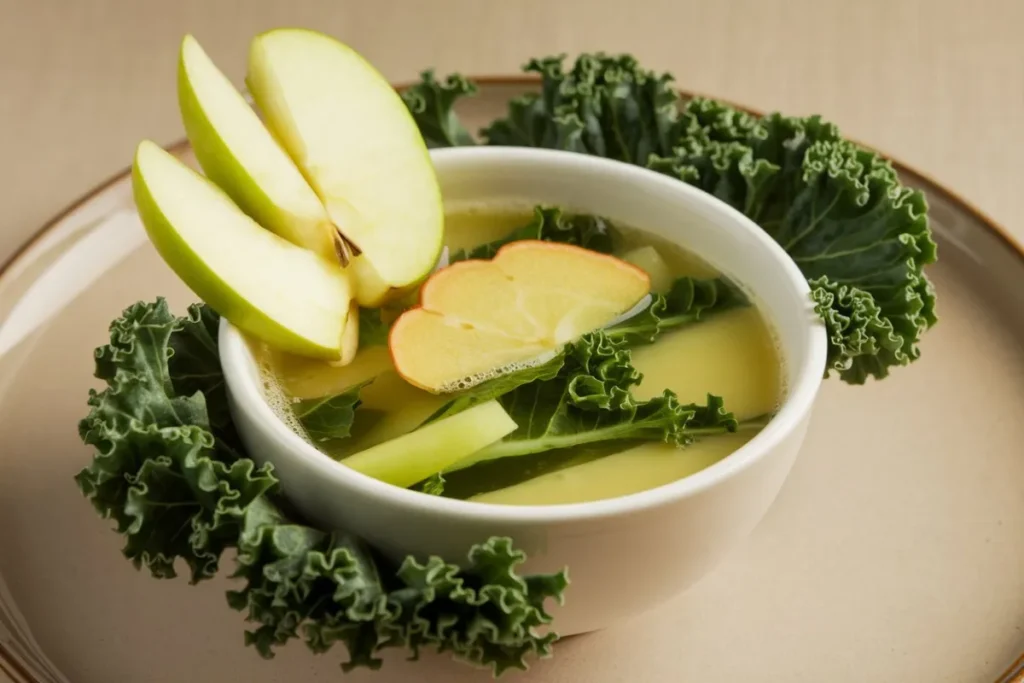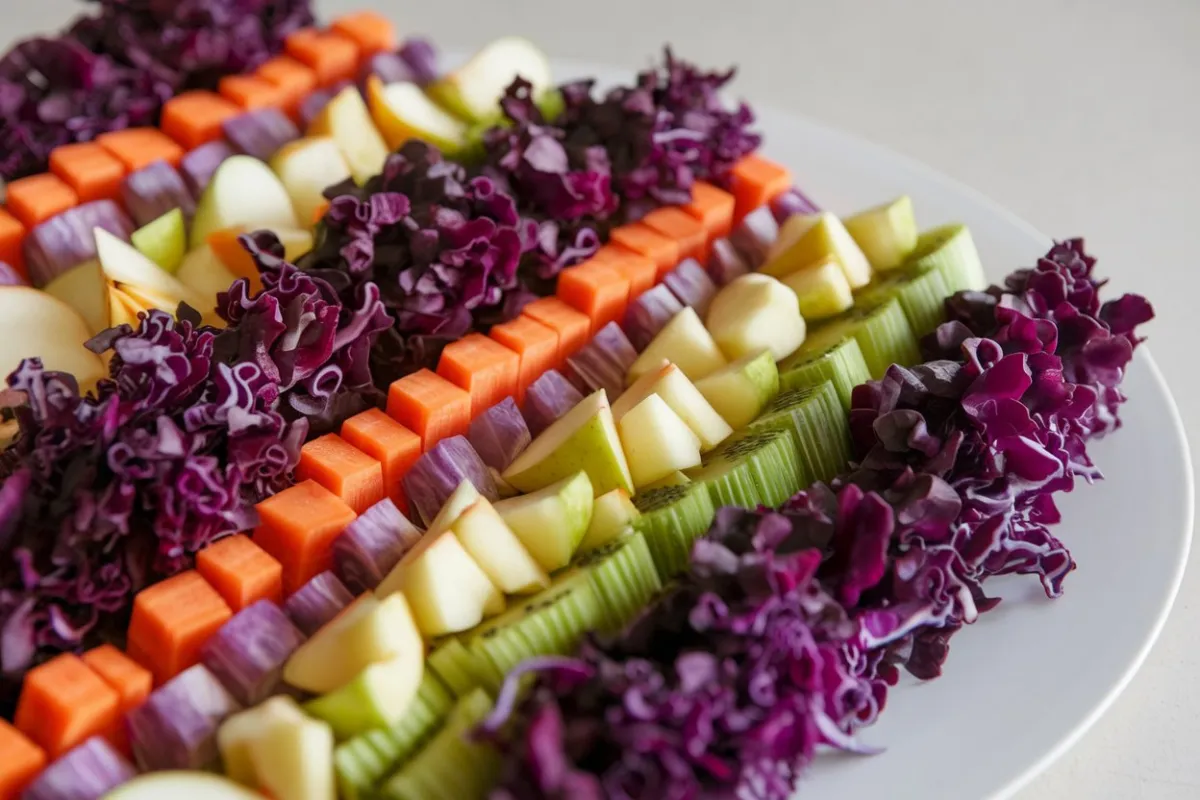Juicing has gained popularity among health enthusiasts and those looking to increase their daily intake of fruits and vegetables. However, not all juices are created equal. The natural sugar content in fruits can sometimes turn a seemingly healthy drink into a sugary, high-calorie option. This is where the 80/20 rule for juicing comes into play. This guideline helps you create juices that are not only delicious but also balanced, nutritious, and lower in sugar.
Introduction to the 80/20 Rule for Juicing
The 80/20 rule for juicing is a simple, yet effective, principle suggesting that juices should consist of 80% vegetables (low-sugar) and 20% fruits (high-sugar). This ratio aims to balance the sweetness and nutritional content of your juice. By prioritizing vegetables, which are naturally low in sugar, you can enjoy the health benefits of juicing without the negative effects of excessive sugar consumption.
This rule is inspired by the broader concept of the Pareto Principle, which posits that 80% of outcomes often come from 20% of causes. Applied to juicing, it emphasizes that the majority of your juice should come from low-sugar ingredients to achieve maximum health benefits while allowing a smaller portion of fruits to enhance flavor.
For more insights on maintaining a healthy juice balance, check out this comprehensive guide on the benefits of juicing.
Understanding the 80/20 Rule for Juicing
The core idea behind the 80/20 rule is to create a nutrient-rich juice that offers the health benefits of vegetables while still being palatable and enjoyable. The key components of this rule are:
- 80% Vegetables: Use a variety of low-sugar vegetables like kale, spinach, cucumber, celery, zucchini, and bell peppers. These vegetables provide a wealth of vitamins, minerals, and antioxidants without adding significant sugar.
- 20% Fruits: Add fruits like apples, oranges, pineapples, and berries to provide a natural sweetness and additional nutrients such as vitamin C, potassium, and fiber.
By adhering to this ratio, you can avoid the pitfalls of consuming too much fruit sugar, which is often present in commercial fruit juices. According to the American Diabetes Association, managing sugar intake is crucial for maintaining stable blood glucose levels, especially for people with diabetes or those looking to lose weight.
Why Follow the 80/20 Rule?
There are several compelling reasons to follow the 80/20 rule for juicing:
- Lower Sugar Intake: Consuming too much sugar, even from natural sources like fruit, can lead to weight gain, increased blood sugar levels, and a higher risk of developing metabolic disorders. By prioritizing vegetables, you reduce the overall sugar content of your juice, making it a healthier choice.
- Balanced Nutrition: Vegetables are packed with essential nutrients, including vitamins A, C, K, and minerals like potassium and magnesium. Juicing these vegetables ensures you consume a wide variety of nutrients vital for maintaining good health.
- Improved Digestion: Juices made primarily from vegetables are easier on the digestive system and contain more soluble fiber, which aids in digestion and promotes a healthy gut.
- Weight Management: Lowering sugar intake is an effective strategy for managing weight. Vegetable-based juices are lower in calories, which can help in maintaining or achieving a healthy weight.
Scientific Rationale Behind the 80/20 Rule
Research supports the idea that diets high in vegetables and low in sugar contribute to overall health and well-being. The 80/20 rule for juicing aligns with many dietary guidelines that advocate for increased vegetable consumption while moderating fruit intake due to its natural sugar content.
Juices with high sugar content can cause spikes in blood glucose levels, leading to energy crashes, increased hunger, and over time, insulin resistance. By keeping fruit content to 20%, you maintain a healthy balance that supports steady blood sugar levels and sustained energy.
Selecting Ingredients: Vegetables vs. Fruits

Choosing the right ingredients is key to successfully implementing the 80/20 rule for juicing. Here’s a guide to help you make the best choices:
Low-Sugar Vegetables to Include:
- Kale: Rich in vitamins A, C, and K; contains fiber and antioxidants.
- Spinach: High in iron, magnesium, and vitamins A and C.
- Cucumber: Hydrating and low in calories; contains vitamin K and antioxidants.
- Celery: Low in calories, high in water content; good source of vitamins A and K.
- Zucchini: Contains vitamin C, potassium, and antioxidants.
- Fennel: Rich in fiber, vitamins A and C, and potassium.
- Broccoli: High in vitamins C, K, and folate; contains fiber.
- Bell Pepper: Provides vitamin C, fiber, and antioxidants.
High-Sugar Fruits to Use Sparingly:
- Apples: Offers natural sweetness; contains fiber and vitamin C.
- Pears: Adds mild sweetness; rich in fiber and vitamin C.
- Grapes: Provides a burst of sweetness; contains vitamins C and K.
- Oranges: Offers a citrus flavor; high in vitamin C.
- Pineapple: Adds tropical sweetness; contains bromelain and vitamin C.
- Mango: Adds a sweet, rich flavor; packed with vitamins A and C.
- Carrots: Though a vegetable, it has higher sugar content; adds a mild sweetness.
To create an ideal juice, start by selecting four parts of vegetables to one part of fruit. Here are some example combinations:
- One cup of apple + four cups of cucumber
- One cup of pear + two cups of celery + two cups of spinach
- One cup of grapes + two cups of cucumber + one cup lemon + one cup fennel
Juicing for Health: Key Nutrients from Vegetables and Fruits
Juicing is a powerful way to incorporate a wide range of nutrients into your diet. Here are the key benefits of the nutrients found in vegetables and fruits:
- Vitamins and Minerals: Juices made with a variety of vegetables and fruits are packed with essential vitamins (A, C, K) and minerals (potassium, magnesium). These nutrients support everything from immune function to bone health.
- Phytochemicals: These are plant compounds with antioxidant properties that help protect the body from oxidative stress and inflammation. According to research from the National Center for Biotechnology Information (NCBI), phytochemicals can lower the risk of chronic diseases, including cancer and heart disease.
- Soluble Fiber: Though juicing can remove some fiber, especially insoluble fiber, juices still retain soluble fiber, which aids in digestion and promotes a healthy gut microbiome.
- Hydration: Juicing significantly contributes to your daily fluid intake, keeping you well-hydrated. Hydration is crucial for maintaining bodily functions, such as circulation, digestion, and temperature regulation.
Drink the Rainbow: The Importance of Color Variety in Juicing
To maximize the benefits of juicing, it’s essential to include a variety of colors in your juice blends. Different colors in fruits and vegetables often indicate the presence of different nutrients:
- Green: Rich in chlorophyll, folate, and magnesium (e.g., spinach, kale, cucumber).
- Orange/Yellow: High in carotenoids like beta-carotene, which are crucial for eye health and immune function (e.g., carrots, oranges, bell peppers).
- Red: Contains lycopene and anthocyanins, which have antioxidant and anti-inflammatory properties (e.g., tomatoes, red peppers).
- Purple/Blue: Packed with antioxidants, including anthocyanins that help protect cells from damage (e.g., blueberries, purple cabbage).
Recipes and Practical Applications
Here are some delicious and healthy recipes to help you get started with the 80/20 rule:
- Green Refresh:
- 1 cup spinach
- 2 cups cucumber
- 1/2 lemon
- 1/2 green apple
- Instructions: Juice all ingredients together and enjoy a hydrating, nutrient-packed drink.
- Citrus Energizer:
- 1 cup kale
- 1 cup orange
- 1/2 cup pineapple
- 2 cups celery
- Instructions: Combine all ingredients in a juicer, serve chilled for a refreshing energy boost.
- Berry Blast:
- 1 cup blueberries
- 1/2 cup strawberries
- 1 cup zucchini
- 2 cups spinach
- Instructions: Juice all ingredients, stir well, and savor the antioxidant-rich blend.
- Detox Delight:
- 1 cup cucumber
- 1/2 cup lemon
- 1 cup parsley
- 2 cups kale
- 1/2 apple
- Instructions: Juice all ingredients, perfect for a detoxifying cleanse.
Common Mistakes to Avoid When Following the 80/20 Rule
While the 80/20 rule is straightforward, there are some common mistakes people make:
- Overusing High-Sugar Fruits: Adding too much fruit can increase the sugar content of your juice, negating the benefits of the 80/20 rule.
- Not Including Enough Variety: Sticking to the same ingredients can limit your nutrient intake. Rotate different vegetables and fruits to get a wide array of nutrients.
- Ignoring Personal Dietary Needs: Always consider any allergies or specific dietary needs. Some vegetables or fruits might not be suitable for everyone.
- Juicing Too Often Without Fiber: While juicing is beneficial, remember that whole fruits and vegetables also provide fiber essential for digestion and overall health.
Juicing and Weight Loss: How the 80/20 Rule Can Help
For those looking to manage their weight, the 80/20 rule can be particularly effective. Here’s how:
- Low-Calorie Content: By focusing on vegetables, which are naturally lower in calories, your juice will have a lower calorie content, making it easier to create a calorie deficit necessary for weight loss.
- Steady Blood Sugar Levels: A balanced juice prevents spikes in blood glucose, which can lead to cravings and overeating. The fiber content from vegetables also helps keep you fuller for longer.
- Metabolism Boost: Certain vegetables, like spinach and kale, are known to boost metabolism due to their high iron content, which supports oxygen transport in the blood and helps burn calories more efficiently.
Weight Loss Testimonials and Case Studies
Many people have successfully used the 80/20 rule to aid in weight loss. For instance, Sarah, a 35-year-old from California, reported losing 15 pounds in three months by replacing one meal a day with an 80/20 juice. She emphasized the importance of choosing a variety of vegetables to keep her taste buds satisfied and cravings at bay.
Another case study from a group of participants in a health retreat showed that those who followed the 80/20 rule experienced reduced sugar cravings, improved digestion, and sustainable weight loss over a six-month period.
Frequently Asked Questions (FAQs)
1. What is the best fruit to use in 80/20 juices?
Apples and berries are often recommended due to their balance of sweetness and relatively low sugar content.
2. Can I follow the 80/20 rule if I have diabetes?
Yes, but it’s essential to monitor blood sugar levels. Always consult with a healthcare professional before making changes to your diet. More on this can be found here.
3. How often should I drink an 80/20 juice?
It depends on your health goals, but once daily is a good start.
4. Can I adjust the ratio to 70/30 or 90/10?
Yes, you can adjust the ratio based on your taste and health needs, but the 80/20 ratio is a balanced starting point.
5. What are the best combinations for specific health goals (like detox, energy boost, etc.)?
For detox, consider using ingredients like lemon, ginger, and cucumber. For energy, add fruits like apples and vegetables like spinach for a nutrient boost.
Conclusion: Embracing the 80/20 Juicing Lifestyle
The 80/20 rule for juicing is a simple yet powerful guideline that allows you to enjoy the numerous benefits of juicing while minimizing the potential drawbacks of high sugar content. By focusing primarily on vegetables and supplementing with small amounts of fruit, you can create tasty, nutritious beverages that support overall health and well-being.
Remember, juicing is not just about following a strict formula—it’s about experimenting with different combinations, enjoying the process, and finding what works best for you. So, grab your favorite vegetables and fruits, and start creating your perfect 80/20 juice today!

